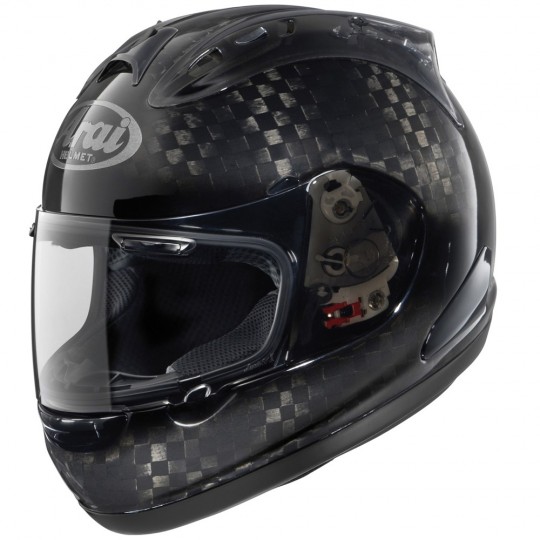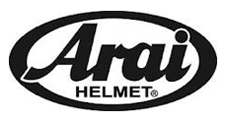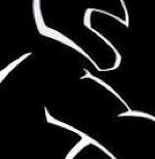I care a lot about safety, I teach MSF and I really enjoy it. Yep it is cold, hot, rainy, and sometimes it is painful for I enjoy it. Every instructor talks about the safety part of motorcycling and there is even a video to watch as well. Something I usually see in every class is that a few students have already bought a motorcycle and they are in the class because they want to get better. I usually ask the students that have bought the motorcycle if they have bought the gear as well. Sometimes the answer is “YES”, for the most part the answer is “NO”.
Motorcycle Helmets
The most important piece of protective gear you can wear is a helmet manufactured to meet DOT standards. I wear a full face DOT / Snell helmet. I have both the Arai and the Shoei helmets. I rotate them for the road. The reason I wear a full face helmet while riding is that if I go down I do now want to have my jaw ripped off and my face used as a brake pad. I have seen that and it is not pretty. So please for yourself and your family please wear a helmet. Buy the best helmet you can afford, am I recommending that you buy a $1,000 helmet? No I am recommending that you buy the best helmet that will protect you in the event of a dismounting of your motorcycle.

Motorcycle Face Protection
Ever been hit by rain at 75 mph on your motorcycle? Ever been shot with a BB as a kid, it hurts so back to the full face issue, don’t use your face as a brake pad for anything while you are on your motorcycle.
Motorcycle Face Shields
I say this is where we talk about face protection. People have been seriously injured without proper motorcycle face protection. If you are smart enough to wer a helmet then you ned to make sure that you have a face shield. Some are clear, some are smoke and other are tinted with a wide variety of colors. Tinted shields help avoid eye fatigue during daylight hours, but always wear a clear one at night. Make sure the shield you choose is designed for your helmet and does not interfere with any eyeglasses you may wear.
Motorcycle Goggles
Goggles are meant to be worn around the helmet and secure in fit to protect your eyes. The worst thing to have happen when you are riding is to get gunk in your eyes and have your eyes produce tears. Maintain your goggles properly: dirty goggles can impede safe sight. Whether you wear a face shield or goggles, tinted lenses may be used during the day, but you should use clear lenses at night
Motorcycle Footwear
Proper footwear that is sturdy, over-the-ankle boots can protect you from a variety of riding hazards. Motorcycle boots protect against burns from hot exhaust pipes and impacts from flying road debris. Motorcycle boots with oil-resistant, rubber-based composite soles will give you a strong grip on the pavement and help you keep your feet on the pegs. If your motorcycle boots have heels, they should be low and wide. In case of a crash, motorcycle boots help provide valuable protection against foot and ankle injuries.
Motorcycle Gloves
Hot weather, cold weather and everything in-between you need to wear gloves. The use of motorcycle gloves is something you will want. Motorcycle gloves protect you against bugs, rain, hail, all temperatures and debris.
Motorcycle Jackets, Pants, Riding Suits
Protective gear will help you stay comfortable while riding in any conditions. In the event of a motorcycle crash, proper riding gear will help prevent or reduce injury. “The Hurt Report” states that covering the body with leather or an abrasion-resistant fabric (e.g., Cordura®, Kevlar® or ballistic nylon) also provides a high level of injury protection. Protective apparel designed specifically for motorcycling will afford the best combination of comfort and protection. These garments are cut longer in the sleeves and legs, and fuller across the shoulders to accommodate your riding posture. Special overlaps and flaps help seal out the wind and padding helps protect you in a crash. Motorcyclists often wear leather because it is durable and abrasion resistant, giving good protections against injury. Many modern fabrics, such as Cordura® and ballistic nylon, are also abrasion-or wind resistant, waterproof or have high-visibility properties. Many motorcycle dealers carry a varied line of riding jackets and suits. Your riding habits, budget and local weather conditions will influence your choice of purchase.
Shop wisely, making sure your purchase fits properly and is specifically made for motorcycling. Your gear should fit comfortably without binding. However, wide flared pants, flowing scarves and similar items should be avoided because they could become entangled in the motorcycle. A jacket with a zippered front will be more wind-resistant than a jacket with buttons or snaps. A flap of material over the zipper of a jacket gives additional protection against the wind. Jackets with sleeves tapering to fitted cuffs and waists are recommended to help keep wind from blowing into the garment. Be careful about collar style–a large, loose collar will flap when riding and may irritate your skin or distract you.
When preparing to ride in cold weather, several layers of clothing are necessary, usually starting with thermal underwear. Extra layers of pants, shirts and jackets should be worn to aid body heat in forming a warm insulation. Topping your clothing with a windproof outer layer will prevent the cold wind from reaching your body. Another alternative when riding in cold weather is to wear a winter riding suit. These lightweight, insulated suits worn over your street clothes provide the warmth needed to prevent hypothermia. Another option available to motorcyclists is an electrically warmed suit or vest.
These items can be quite effective. Regardless of temperature, wearing proper protective riding gear, including a long-sleeved top and long pants, will reduce your chances of becoming dehydrated. The gear you wear when riding can also serve to make you more visible in traffic. Choose brightly colored gear when possible. Only two riders of the 900 crash cases studied by “The Hurt Report” were wearing brightly colored clothing. If you wear dark clothing, retroreflective vests may be worn over your jacket. Also, it is a good idea to affix reflectorized tape striping to the gear you wear regularly when riding. Jackets made with retroreflective material also will help make you more visible at night. Finally, there are gear enhancements available for even more crash protection such as body armor, spine protectors and kidney belts. These may be single items you wear under your gear, or they may be built into the protective gear you buy.
Motorcycle Rain Suits
For the most motorcycle riders, a rain suit or waterproof riding suit is a must. A dry motorcyclist will be much more comfortable and alert than a rider who is wet and cold. One- or two-piece styles are available in a variety of materials and colors, the most common being polyvinyl chloride (PVC) and nylon.Highvisibility orange or yellow are good color choices.
There are usually only small differences in rain suit styles. The pants should have elastic at the waist and stirrups (or tie-strings) on the legs to wrap around the rider’s boots. The jacket should have a high collar that is held closed by a snap or adjustable hook-and-loop fastener. The front zips up and a wide flap fastens across the opening.The wrist openings fit snugly with more elastic.







